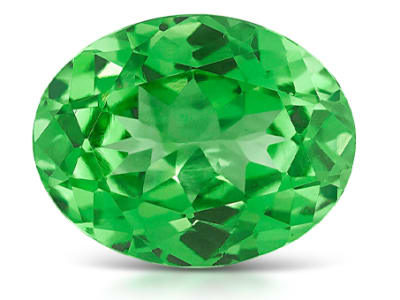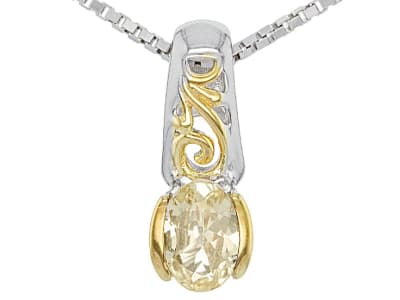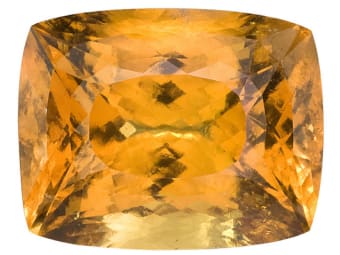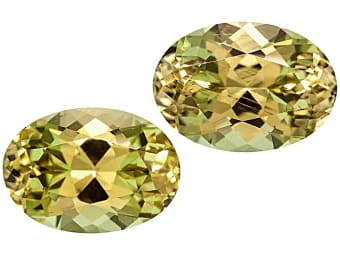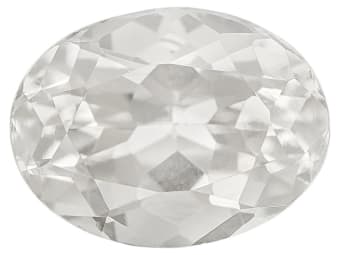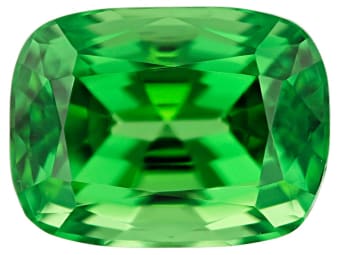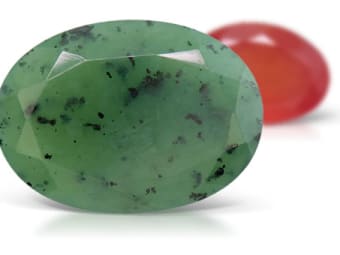The garnet species, grossularite (or grossular), has several well-known gemstone varieties including hessonite, tsavorite, leuco garnet, and hydrogrossular. The name for this species is derived from a Latin word for gooseberry a green fruit. Grossular garnet can be colorless, white, gray, yellow or brown, yellowish green to green, orange to reddish orange, various shades of red, and nearly black.
General Information
LWUV: Colorless or mint: inert to weak orange; Yellow: Inert to weak orange, pink or red
Grossularite Colors
-
 Black
Black -
 Brown
Brown -
 Colorless
Colorless -
 Gray
Gray -
 Green
Green -
 Green
Green -
 Green
Green -
 Green
Green -
 Green
Green -
 Orange
Orange -
 Orange
Orange -
 Red
Red -
 White
White -
 Yellow
Yellow -
 Yellow
Yellow -
 Yellow
Yellow -
 Yellow
Yellow -
 Yellow
Yellow
Grossularite Spectra
We acknowledge the significant scientific contributions of John S Harris, FGA to the study of gemstone spectra and with deep appreciation to him, acknowledges the use of his images and related notes about gemstones and their spectra in the educational materials on this website.
Alternate Names
Hessonite, cinnamon stone, tsavorite, mint garnet, leuco garnet, hydrogrossular, grossular
Countries of Origin
Myanmar; Papua New Guinea; Angola; Cambodia; Malaysia; Kazakhstan; Portugal; Oman; Greece; Austria; Mongolia; Korea (the Republic of); Morocco; Unknown; Mali; Brazil; Algeria; Iraq; Tonga; Colombia; Ecuador; Argentina; Hungary; Japan; Ukraine; Taiwan (Province of China); Bolivia (Plurinational State of); India; New Zealand; Canada; Turkey; Namibia; Finland; Honduras; Italy; South Africa; Antarctica; Jamaica; Peru; Germany; Tanzania, United Republic Of; Afghanistan; Russian Federation; Czechia; Guinea; United States of America; Egypt; Madagascar; Sierra Leone; United Kingdom of Great Britain and Northern Ireland; Saudi Arabia; Sweden; Pakistan; China; Ireland; Poland; Slovakia; Bulgaria; France; Jordan; Kyrgyzstan; Romania; Sri Lanka; Kenya; Switzerland; Spain; Cuba; Nicaragua; Norway; Botswana; Dominican Republic; Mexico; Zimbabwe; Australia; Greenland; Indonesia
Care
Normal care
Species/Variety
Hessonite
Nicknamed the "cinnamon stone", hessonite is a variety of grossular garnet and comes in two colors, golden and cinnamon. A perfectly colored hessonite is a bright golden orange that resembles a combination of honey and orange with an internal fire. Some hessonites have tints of red and brown with cinnamon appearance. Hessonite is common in the gem gravels of Sri Lanka and practically all hessonite is obtained from this locality, although it is also found in Africa. While the clearest gems are most prized, inclusions in hessonite are common, with unique toffee-like streaks giving hessonite an oily or even glass-like appearance.
Mali Garnet
Mali garnet is one of the latest discoveries in the garnet family. This attractive and very interesting rare mixture of andradite and grossular was only discovered in late 1994 at the Sandar Mine in Mali's Kayes region (Diakon Arrondissement). Extremely rare, Mali garnets are a bright, uniform light yellowish green color.
LWUV: Inert
Leuco Garnet
Leuco garnet is the colorless variety of grossular garnet. The colorless variety is extremely rare. Known specimens have come from Myanmar and Sri Lanka.
Mint Garnet
Mint garnet is the pale green variety of grossular garnet that gets its color from trace amounts of vanadium and chromium. Gemstones are typically under 1 ct. It is indicator gem for tanzanite and has been found in Tanzania, Kenya, and Madagascar. It has the nickname “UV garnet” because most stones florescence a peachy orange in Long Wave Ultraviolet light.
Rosolite, Landerite or Xalostocite
Rosolite which is sometimes called landerite or xalostocite is found in Sierra de Cruces, Mexico. It is the translucent to opaque variety of grossular garnet found in marble.
Tsavorite
Tsavorite is one of two green varieties of garnet, though arguably the more important of the two. Especially in smaller sizes, tsavorite creates competition for emerald because it is less included, rarely treated and more durable. Like some emerald and green tourmaline, tsavorite garnet owes its green hues to the presence of vanadium and chromium. First discovered in Tanzania in 1967 and a few years later in Kenya, tsavorite's name pays homage to the nearby Tsavo National Park.
Hydrogrossular Garnet
Hydrogrossular garnet is typically translucent to opaque and is usually available as cabochons, but on rare occasion may be found as transparent, faceted gemstones. Generally seen as green to blue-green, pink, white, and gray, this gemstone may contain small dark gray to black inclusions and may look similar to jade if opaque. Hydrogrossular is a variety of grossular garnet where hydroxide partially replaces silica.
